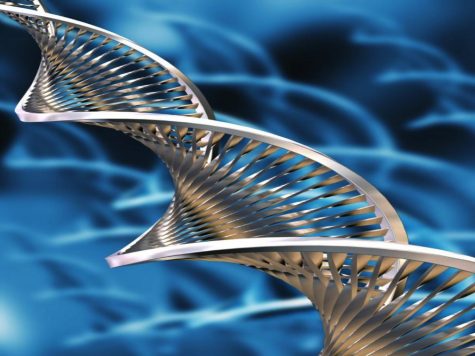Humanity’s Definition in The Novel Frankenstein
What does it mean to be human? From our biological reality to global dominion, there is no one answer to our existence. However, in the novel Frankenstein, the author, Mary Shelly attempts to define this humanistic philosophical question with the inclusion of an important paradoxical character: a physically inhuman, grotesque figure that possesses human values. Throughout the novel, the contradiction of the Wretch’s monstrosity and its highly intelligent, emotional self exemplifies Mary Shelley’s definition of humanity; we are composed of not only the defining biological appearances but also emotional complexities, logical capacities, and unique social behaviors. Mary Shelley supports her assertion with emphasis on the physical, psychological, and social aspects of the Wretch.
In the novel, Victor Frankenstein is the physical human character in the book. The Wretch is the physical monster. Yet their knowledge, morals, rationale, and actions heavily blur the strict archetypes of good and evil; human and monster. However, initially, with the creation of the Wretch, the reader is led to believe that these classic pillars of protagonist versus antagonist hold relevance in Frankenstein, due to each characters’ distinct physical appearance. While Victor’s form fits with the socially accepted figure in society, the body of the Wretch is grotesquely deformed. “His yellow skin scarcely covered the work of muscles and arteries beneath…formed a more horrid contrast with his watery eyes, that seemed almost of the same colour as the dun-white sockets in which they were set, his shrivelled complexion and straight black lips” (Shelley 55). The Wretch is introduced in the novel resembling an alien in society. He is classified as inhuman from the initiation point of his creation because there is no one who compares with his physical appearance, “eight feet in height, and proportionally large” (50). By initially drafting the Wretch as a hideous creature, Mary Shelley displays that appearance is a defining element of humanity. There are socially accepted parameters of the body within society that can be insurmountable to someone who may not fit the criteria. Thus, in creating the hideousness of the Wretch, the author proves that humankind is classified, first and foremost, through the appearance of being a conventional human. The Wretch doesn’t fit the mold.
Being accepted by man is the Wretch’s ultimate goal. Much like any other person, social interaction is vital for his well-being. The interactions he craves, however, cannot be initiated or maintained because of his physiological appearance. “‘I rushed from my hiding-place and with extreme labour, from the force of the current, saved her and dragged her to shore…but when the man saw me draw near, he aimed a gun, which he carried, at my body and fired’” (158). The Wretch instinctively jumps into danger to save a complete stranger, purely because of his empathy and emotional connection to others. However, despite acting with the best, most human-like intentions, the Wretch is instantly subjugated to humanity’s intense affinity bias: associating positive attributes to something relatable while foreign encounters can lead to distrust and prejudice. The unnamed man, seeing a deformed monstrosity in possession of a helpless female, acted upon his predetermined judgments that the monster holding the drowned girl was the perpetrator of the scenario; the villain in that circumstance. Affinity bias plagues the monster time and time again throughout the novel. With the inclusion of this dynamic, Mary Shelley conveys that despite all moral intentions and ethical practices, the interpretation of humanity is entirely based on the recognition of another. Values cannot be positively interpreted by others unless some semblance of acceptance forms in their mind. The affinity bias we all possess against foreign others must be quieted long enough to determine the true principles behind actions. The author of Frankenstein thus proves, again, that appearance is a deciding factor for humankind.
Knowledge and innate brain capacity are categorizing elements of humankind. As far as we know, no other biological organism has the mental capacity than that of a human. At the beginning of the Wretch’s development, he is much like any other nascent child; not capable of complex expression and possesses low awareness of the surroundings. “‘I saw, felt, heard, and smelt at the same time; and it was, indeed, a long time before I learned to distinguish between the operations of my various senses’” (111). Yet as time passes and the Wretch is nurtured by the people of the DeLacey cottage, his cognitive capacity expands greatly. “‘I improved rapidly in the knowledge of language, so that in two months I began to comprehend most of the words uttered by my protectors…I obtained a cursory knowledge of history…it gave me an insight into the manners, governments, and religions of the different nations of the earth’” (132). Only humans are capable of understanding such complexities of society such as language and literature. Nevertheless, the Wretch can comprehend such topics. He cannot be classified as physically human, based on his appearance, but possesses cognitive abilities which are solely a human characteristic. Mary Shelley intentionally includes the juxtaposition between the monster’s unacceptable form and his boundless mental capacity as tension in the definition of humanity. With the addition of such contrast, she convolutes the once-stereotyped image of the Wretch as a senseless brute and provides an additional aspect of the definition of humanity. Because of the considerable cognitive proficiency illustrated by the Wretch, he cannot be a linear monster; he cannot be a definitive evil archetype within literature. The Wretch possesses a defining characteristic of mankind. Thus, another layer in Mary Shelley’s definition of humankind is revealed through her composition of an intelligent, communicative monster.
Through the creation of the Wretch in Frankenstein, Mary Shelley writes the character with a grotesque outward appearance yet a paradoxical interior of complex emotional and social intelligence. Much like a human, the Wretch is capable of reasoning with others, maintaining social skills, self-awareness, and the expression of emotions to a high level. These traits render him capable of conversing and connecting with mankind. “‘My heart was fashioned to be susceptible of love and sympathy, and when wrenched by misery to vice and hatred, it did not endure the violence of the change without torture such as you cannot even imagine’” (256). Emotions of love and sympathy are felt and desired in the Wretch’s heart. He longs for love and simple connection, much like any human being. When these emotions become tainted by misery, immense torture follows, much like the decline of the emotional health of any human individual when tragedies occur. It is no accident that Mary Shelley wrote the Wretch as a figure who possesses an intricate emotional complexity. A major component of mankind is its ability to express complicated emotions to a high degree of effectiveness. The Wretch, the “filthy daemon” (79), is capable of such expressiveness, making him more than just a disfigured frame of monstrosity. In the composition of a character capable of such social and emotional intelligence, Mary Shelley intentionally deepens her assertion that humankind is defined by its biological nature and by its values, cognitions, and behaviors.
The definition of humanity is convoluted. There is no straightforward answer. As exemplified by Mary Shelley with the creation of the Wretch in Frankenstein, humanity must be depicted as a compilation to fully comprehend its essence. The biological structure of humans is a vital facet in their description, given that the Wretch could never be considered human purely from his physical appearance. Nonetheless, the social, emotional, and cognitive intelligence demonstrated by the monster outlines the author’s affirmation that humanity is defined not only by physiological appearances but also by emotional complexities, logical capacity, and unique social behaviors. We are a multiplicity.






